- Bernard Preston homepage
- Brewing
Making honey mead
Making honey mead is really only for those with a few hives in the garden; it's an excellent probiotic too.
For that small minority, very strange people some would say who seem to get more kicks and thrills having fun themselves than watching others enjoying the high life, our green home is such an adventure.
Making honey mead is a good way to use up the gleanings produced after decapping the combs. Many commercial wines and beers these days are loaded with chemicals.
Some love to go hiking and camping. Others play tennis or golf; and there’s always the garden when society ceases to satisfy.
There are often synergies between these activities. Bowls is where lasting friendships are made, in churches flower-arrangers explore their creative sides and school fetes are opportunities for bakers to show off their wares.
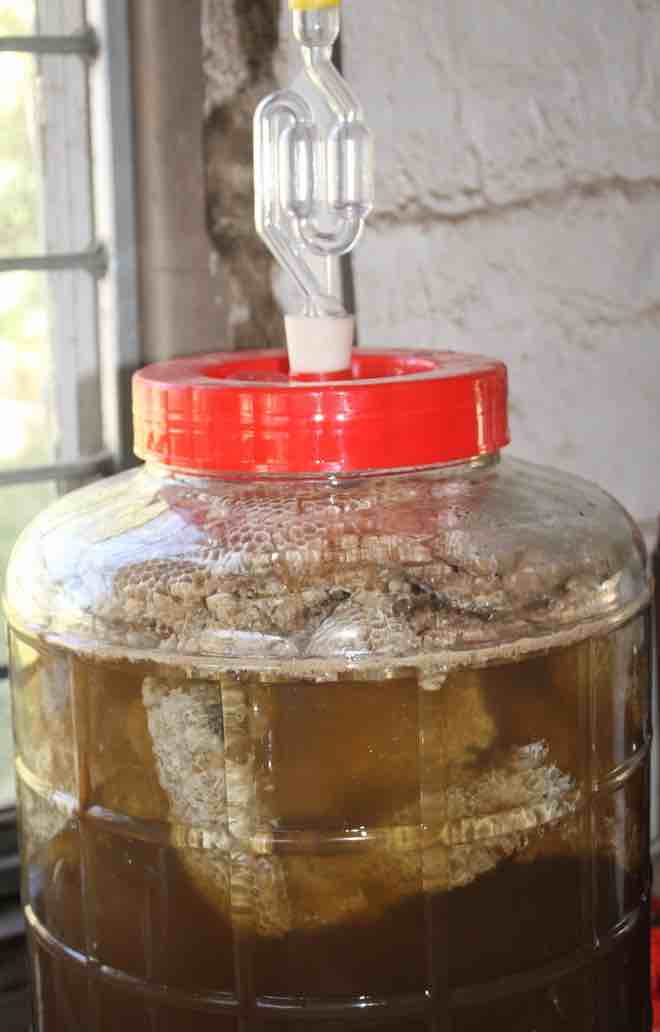
“People eat organic but haven’t expanded their thinking to drinking natural wines.”
- Véronique Raskin
For beekeepers there is mead making. It’s a tipple as old as time, predating wine by many millennia; it is made from honey and often various fruits. In fact it is a way to preserve the nutrients in berries for example for year-round enjoyment and wellness.
Each cell in the comb is sealed by the bees with a cover so they do not get sticky feet; and to keep oxygen out. In order to extract the nectar the keeper has to remove this lid. With it is taken a large amount of what we call the gleanings; honey that would otherwise be wasted in one way or another. Heating would recycle it effectively but spoil the product.
Putting these cappings out for the bees to scavenge starts wars and it has the potential to spread disease.
So beekeepers can use these gleanings for making mead. I was in fact first introduced to the subject in a school set-book called “Under the Greenwood Tree” by Thomas Hardy, the English novelist and poet.
The idea lay dormant for many decades and only began to germinate when I met a visionary by the name of Eddy Lear who started SAMMA; the South African Mead Makers Association. There are now at least 240 active members on the Whats App group, some exporting large volumes to the USA.
It is an exotic drink in one sense but was made many centuries ago by the Bushmen; so it’s indigenous too. In fact if one believes that the Sterkfontein caves are truly “The Cradle of Mankind” then these hunter-gatherers were probably the first brewers of what we today call mead; a wine fermented from honey.
This mulberry mead really should be called a melomel; a wine made with honey and fruit.
"Self-sufficiency, simple living and natural brewing."
- Jereme Zimmerman
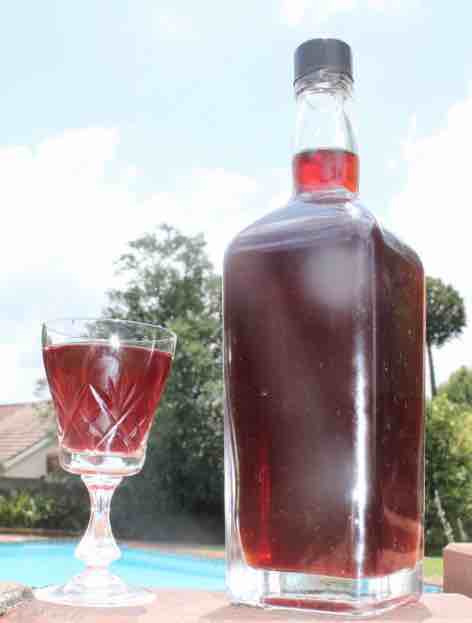
Capturing and preserving the phytonutrients in coloured foods can be done in many ways; making honey mead is just one.
Raw natural honey contains over 80 unique compounds that the bees have gleaned from the nectar and pollen of plants. They themselves synthesise various nutrients which they add.
The composition varies enormously according to the flowers they have visited so some are a deep, dark-red and others pale yellow; a few stay liquid but most crystallise within weeks.
What is the best source of honey for brewing mead? Without a doubt keeping a hive or three in your own garden if you have a protected little nook. You will struggle to find this quality in the shops.
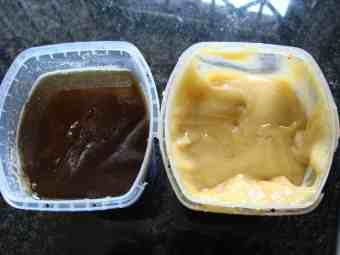
These nutrients give natural honey its unique health properties and interestingly it has a low GI. Excessive warming and processing alas drives off many of these phytochemicals, denatures the enzymes and raises the glycemic index alarmingly.
The subject is also central in the new movement weighing natural vs organic wines and meads.
The living yeast culture in mead also acts as a useful probiotic. I have written previously of the importance of the microbiome for the happy tum; reducing inflammation in the body and balancing our immunity.
Open a bottle of commercial honey and you’ll find it has no scent; but when you take off the lid from one sourced from a small beekeeper you will be greeted by the stunning fragrance of a million flowers. They are poles apart.
Natural honey actually lowers the fasting blood glucose of diabetics but once processed by commercial bottlers the GI is even higher than that of sugar.
Making mead is not intrinsically difficult but it is tedious and time consuming. Attention to detail is all-important. The berries and honey go into a large glass carboy; together with a little pollen, a nutrient for the yeast. An airlock keeps oxygen and fruit flies out but allows the CO2 from fermentation to escape.
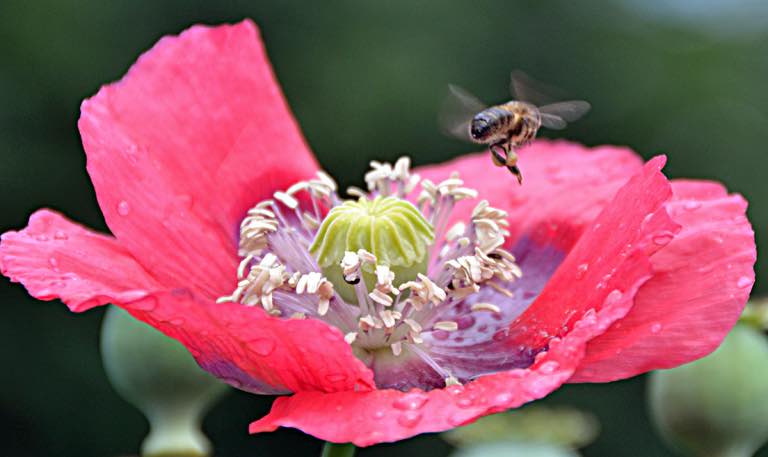
After about six weeks fermentation stops, the dead yeast cells slowly settling at the bottom. The mother liquor is siphoned off into a smaller glass carboy and allowed to mature for at least another four months. It is again "racked" off into clean demijohns leaving any dregs behind.
The pH and specific gravity are measured. Then after a few more months when it has cleared completely the mead may be bottled. Like a good whiskey it improves with time.
It goes without saying that any form of alcohol can be problematic; it makes a good servant but a very bad master. In four of the five Blue Zones of the world where people live such long and healthy lives they drink a few glasses of unpasteurised wine every day.
Clearly natural wines, meads and beers are not unhealthy though beware, the serf always desires to be the master!
Alas there are continued strong warnings from researchers that even small amounts of alcohol increase the risk of cancer, especially of the breast[2].
How much alcohol causes cancer is something to stop and consider.
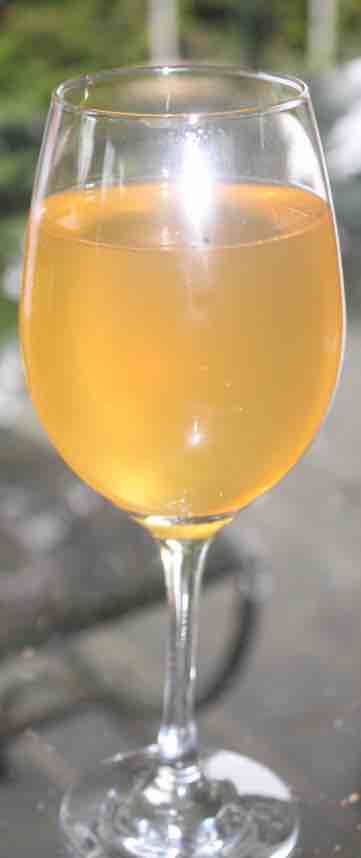
My own favourite to date is a spicy peppadew mead though I brew melomels from mulberries, cherry guavas[3] and will be trying out other unusual foods like butternut.
Mead is an expensive drink to brew if you are not a beekeeper. There’s more than 500g of honey in each 750ml bottle of mead; there’s little point to my mind in going to all this trouble using commercial honey. I’m told that in Gauteng a peppadew mead sells for R450; it’s astonishingly good and quite different to anything you will ever have tasted before.
Why would you want to start keeping bees? Firstly for the environment; they are seriously under threat. They pollinate one in four mouthfuls of the food we eat. If they die out, we go hungry. Secondly natural honey is difficult to find and is expensive. And thirdly you too could be boasting about the mead you are brewing. Not least of all, you’ll have a happier tum.
Is it time to turn off the TV?
Braggart
A braggart is a beer made with honey; first named by Chaucer some eight hundred years ago. In Ethiopia they make an exotic drink called t'ej using honey.
Many brewers experiment with honey brown beer but it has its limitations; you need a concentrate that is often less than ideal.
You can find more information if interested at making honey beer.
Making honey mead
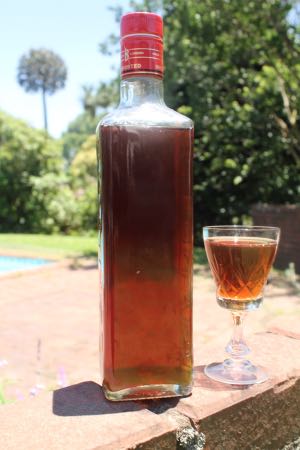
Making honey mead and brewing in general is an enriching experience.
This cherry guava honey mead is a delight, there's no other word for it.
An all-hive mead has no other yeasts or additives of any sort; purely from the bees, unheated and prepared in the ancient natural way.
There are so many fascinating cul de sacs to plunge into; this Rose Petal Honey Mead is our latest gateway to paradise. As the good wife says, these hobbies keep me off the street and out of the pub!
It's important to know how to read a hydrometer.
This 1 gallon wheat beer recipe can be made with honey; I confess to not having much success with it. It goes to vinegar too easily.
Cherry guavas
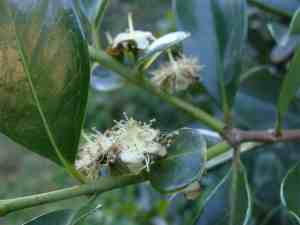
The scent of the flowers from the cherry guava is almost overpowering; a divine fragrance as you enter the garden. It makes the very best of jellies and this guava honey mead is a delight for a bored tongue.
This is a different way to make cherry-guava honey mead; first cooking the fruit is not as good though in my opinion.
So now it's time to start making honey mead; one thing I can promise you is that it is lot more forgiving that baking bread. Yeast certainly has its foibles. I have yet to make a brew that was decidedly unpalatable.
One needs to aerate the must before brewing mead. During the first phase of fermentation the yeast cells need oxygen so that they can rapidly multiply.
Pyment
A pyment is a mead made using honey and grapes for the fruit; it's really just a specialised melomel.
This Catawba grape honey mead is a good way to preserve the nutrients in the fruit for enjoyment all year-round.
You will need this basic mead equipment.
And then there are exotic ferments like this butternut honey mead recipe; the sky is the limit.
Non-alcoholic fatty liver disease
The prevalence of non-alcoholic fatty liver disease has surged alarmingly in those on the "industrial diet" followed by many people worldwide. It is caused ironically by the chronic over consumption of refined carbs and not lipids.
It is greatly exacerbated by diabetes, obesity and "moderate" alcohol intake; the equivalent of two glasses of wine for women and three beers for males.
Bee pollen
Bee pollen contains many remarkable compounds that would benefit human health[4]; it is a true functional food, promoting wellness and helping prevent disease.
However the pollen granule is contained in a "robust outer shell called exine." This limits the use of these beneficial nutrients. Scientists have tried many techniques to break down this tough layer; the simplest appears to be the use of fermentation.
The addition of fully pollenated honeys to fermented foods such as meads and kefir greatly increases the availability of these nutrients.
Bee Pollen gives protection against kidney stones. Vegans are particularly vulnerable; is it time for them to reconsider their refusal to eat natural honey that is unspoiled by commercial processing? Most keepers try very hard to care for their pets; not exploiting them.
Where to start
You need only three bits of equipment to start making honey mead; a carboy, a couple demijohns and an automatic syphon, costing around R1,000. That is less than fifty dollars.
Yeast
Using a wine yeast makes everything far simpler. In South Africa you can buy Vin13 from Distillique. In the fridge it will keep for years.
Hydrate the yeast in water just slightly above the temperature of the must; 2oC is recommended.
It's very active. I now use only 1/2tsp of yeast in a 23 litre carboy; more and it is likely to bubble over.
Yeast has an ideal pH range from about pH 3.8 to pH 4.5.
Add 1.25ml of sodium bicarbonate per 0.5 adjustment on 5 litres.
To raise the pH from 2.0 to 3.5 one would need 3 x 1.25ml = 3.75; about half a teaspoon.
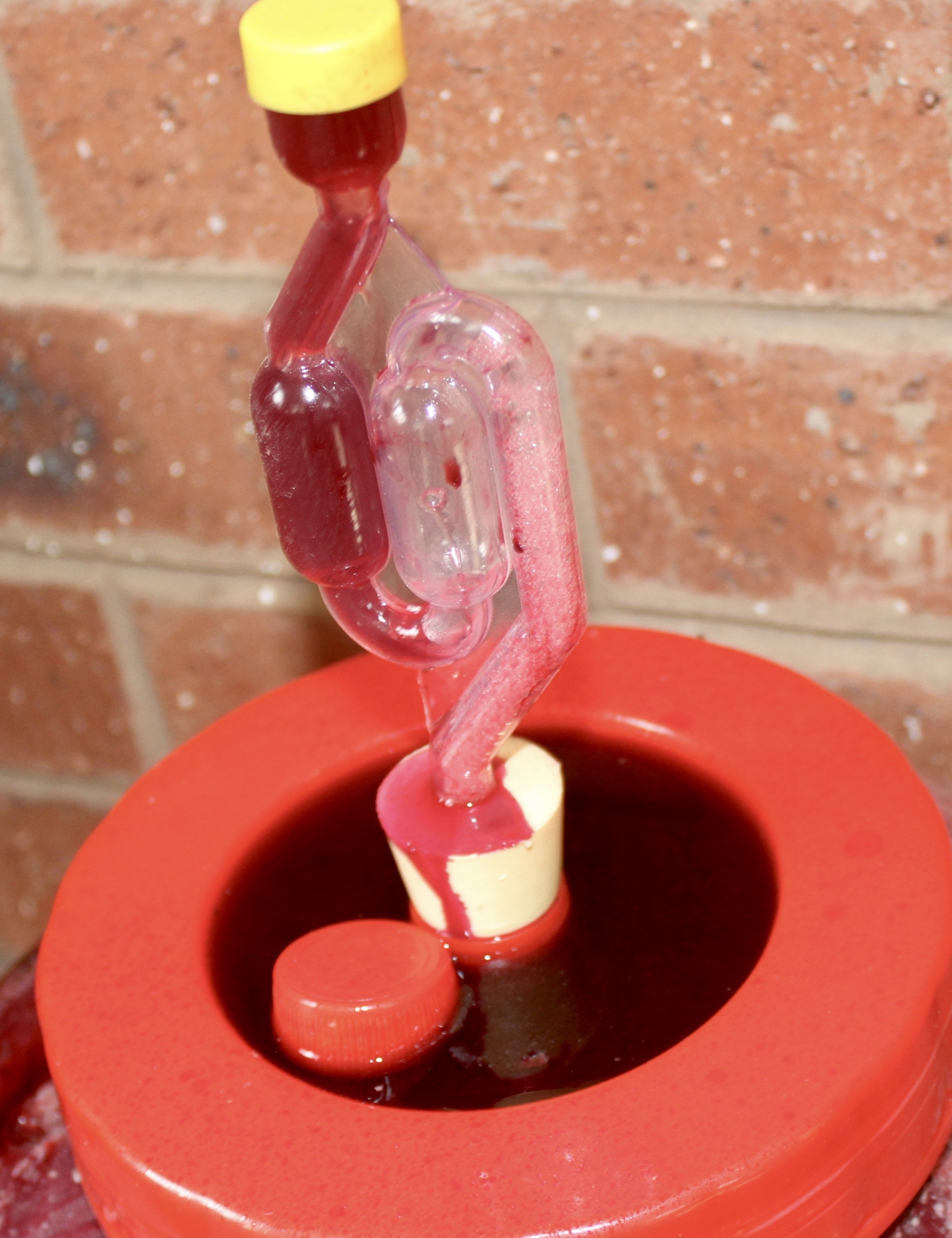
When browsing use right click and "Open Link in New Tab" or you may get a bad gateway signal.
What is so special about mead?
Perhaps what makes mead so different to commercial alcohol is that it is a probiotic. Unpasteurised it is full of friendly yeast cells that contribute to the microflora in the gut. It's actually good for us; in moderation.
What does mead taste like? That depends on which fruits and spices have been added. At Our Green Home we use various berries, cherry guavas and peppadews; the alcohol acts as a preservative for the seasonal micronutrients that can then be enjoyed all year round.
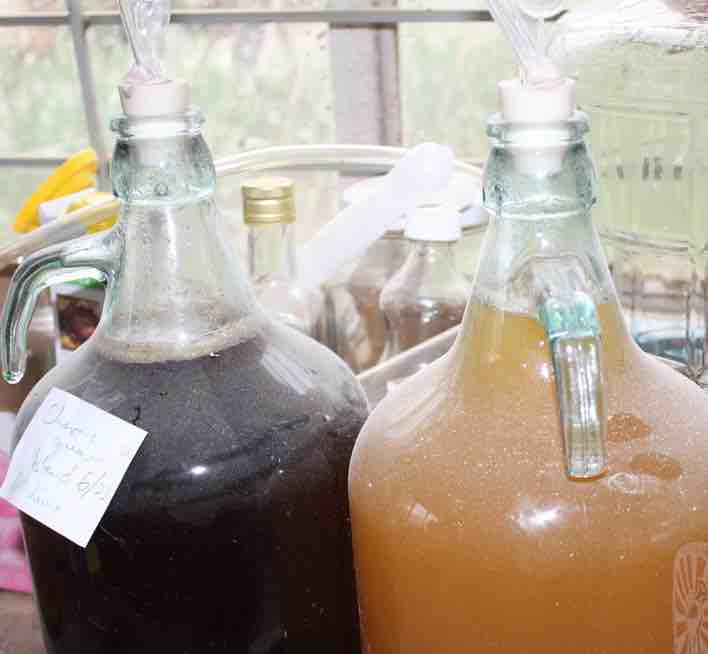
Is mead a beer or a wine? There is some debate here. No malted grains are used in the fermentation so it is definitely not an ale or lager.
And a typical wine uses the sugars in grapes for fermentation. Mead utilises that in the honey but also from various fruits that have been added.
So a mead is closer to a wine than a beer; but different.
Homemade wines and beers are also probiotics that are good for us.
Newsletter
Our newsletter is entitled "create a cyan zone" at your home, preserving both yourself and Mother Earth for future generations; and the family too, of course. We promise not to spam you with daily emails promoting various products. You may get an occasional nudge to buy one of my books.
Here are the back issues.
- Lifestyle and ideal body weight
- What are ultra-processed foods?
- Investing in long-term health
- Diseases from plastic exposure
- Intensive lifestyle management for obesity has limited value
- A world largely devoid of Parkinson's Disease
- The impact of friendly bacteria in the tum on the prevention of cancer
- There's a hole in the bucket
- Everyone is talking about weight loss drugs
- Pull the sweet tooth
- If you suffer from heartburn plant a susu
- Refined maize meal and stunting
- Should agriculture and industry get priority for water and electricity?
- Nature is calling
- Mill your own flour
- Bake your own sourdough bread
- Microplastics from our water
- Alternative types of water storage
- Wear your clothes out
- Comfort foods
- Create a bee-friendly environment
- Go to bed slightly hungry
- Keep bees
- Blue zone folk are religious
- Reduce plastic waste
- Family is important
- What can go in compost?
- Grow broad beans for longevity
- Harvest and store sunshine
- Blue zone exercise
- Harvest and store your rainwater
- Create a cyan zone at your home
Did you find this page interesting? How about forwarding it to a friendly book or food junkie? Better still, a social media tick would help.
- Bernard Preston homepage
- Brewing
Address:
56 Groenekloof Rd,
Hilton, KZN
South Africa
Website:
https://www.bernard-preston.com